On View
The Kochi-Muziris Biennale Brings Together Work by the Guerrilla Girls, Zanele Muholi, and Shilpa Gupta—See Highlights Here
Take a look around the fourth edition of India's largest visual art exhibition.
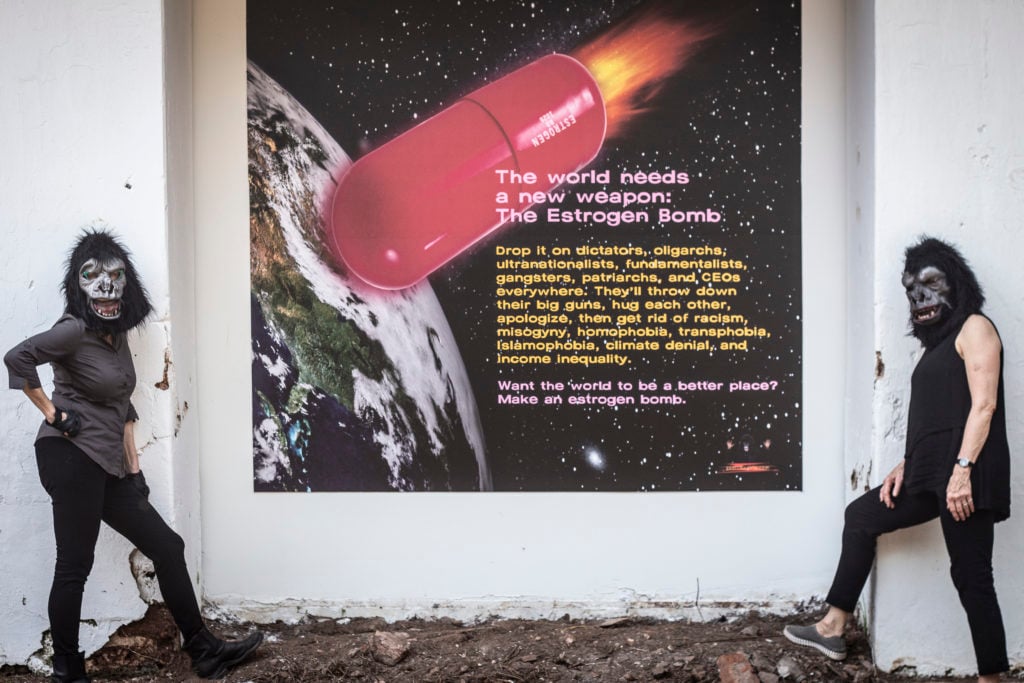
Take a look around the fourth edition of India's largest visual art exhibition.

Naomi Rea

A haunting installation dedicated to imprisoned poets, a captivating and monumental tapestry, and a confrontational series of posters discussing art-world sexism are among the offerings at the fourth edition of the Kochi-Muziris Biennale, which opened to the public yesterday.
This year’s version of India’s largest art exhibition is organized by the artist Anita Dube, whose own work was included in the 2012 edition. Dube, the first woman ever to curate the biennale, was a member of the Indian Radical Painters and Sculptors Association in the 1980s, and this year’s curatorial theme, “Possibilities For a Non-Alienated Life,” reflects her political energy.
Ninety-four international artists from more than 30 countries are featured in the biennial on India’s southwestern coast, which will run until the end of March. More than 100 projects are displayed in heritage properties, public spaces, and galleries across the Fort Kochi, Mattancherry, and Ernakulam neighborhoods of Kochi city.
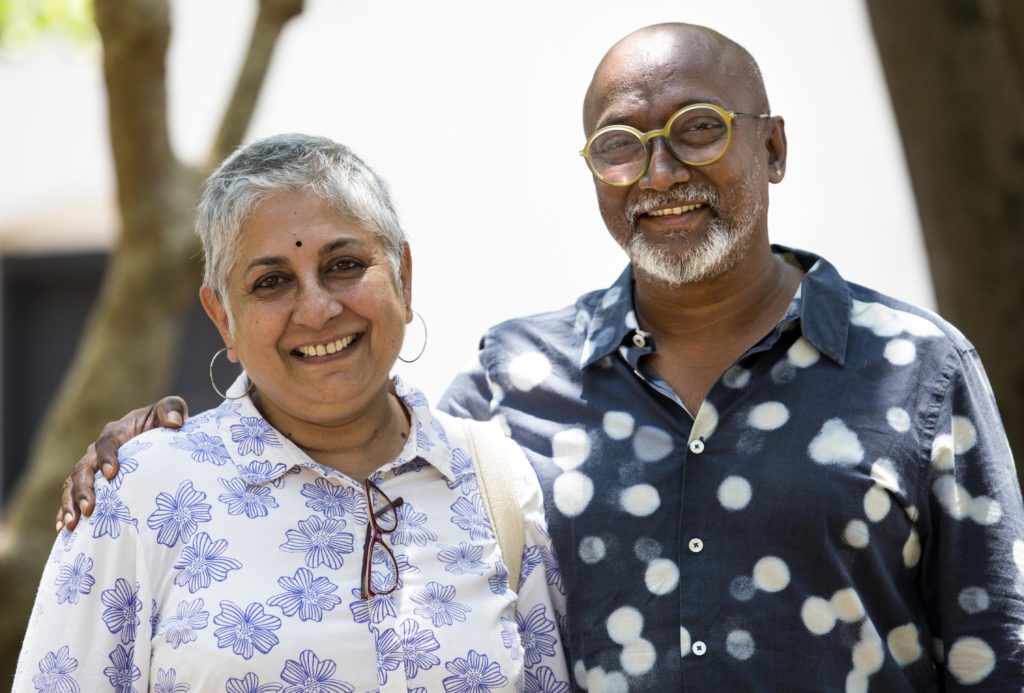
Biennale 2018 curator Anita Dube, and Kochi Biennale Foundation president Bose Krishnamachari. Courtesy of Kochi Biennale Foundation.
In keeping with the biennial’s theme, the artist list is filled with female and queer voices from across the globe, with many works addressing issues of social justice, such as the Guerrilla Girls’ famous feminist poster series. The masked group of women will also take part in a lecture-performance in Kochi this week.
Other participating artists include the London-based Polish artist Goshka Macuga, the pioneering and radical photographer of women’s bodies VALIE EXPORT, the Swiss installation artist Thomas Hirschhorn, the South African artist William Kentridge, the web-based South Korean duo Young-Hae Chang Heavy Industries, and Zanele Muholi, known for her photographs of South Africa’s LGBTQ community.
An early Instagram favorite of the biennial so far is the Scottish artist Nathan Coley’s text-based light bulb sculpture A Place Beyond Belief, drawn from words borrowed from a New Yorker riding the subway after the 9/11 attacks.
Meanwhile, Shilpa Gupta’s immersive sound installation For, In Your Tongue, I Can Not Fit is also proving popular. The large-scale, multi-channel installation features 100 microphones offering a platform to 100 poets who write in different languages but have one thing in common: They have all been jailed for their political beliefs or their writing.
The biennial went ahead as scheduled despite several recent hurdles, including #MeToo allegations surfacing against biennial cofounder Riyas Komu, who has temporarily stepped down while the accusations made against him are under investigation. Also not in attendance is artist Tania Bruguera, who announced earlier this week that she would not give a talk at the biennial as scheduled and instead remain in Cuba to fight against a looming censorship law there.
Meanwhile, in August, the state of Kerala was also hit with the worst flooding it has experienced in nearly a century. The Kochi Biennial Foundation is partnering with Indian online auctioneer SaffronArt on a sale of modern and contemporary art to benefit the flood victims and to rebuild the region. The sale on January 18 will offer work by more than 40 artists, including Anish Kapoor and Dayanita Singh.
The Kochi-Muziris Biennale runs until March 29, 2019. From Gupta’s hanging microphones to the artists Durgabai and Subhash Vyam’s striking paintings in the tradition of the Pardhan Gond tribal communities, take a look around the biennial below.
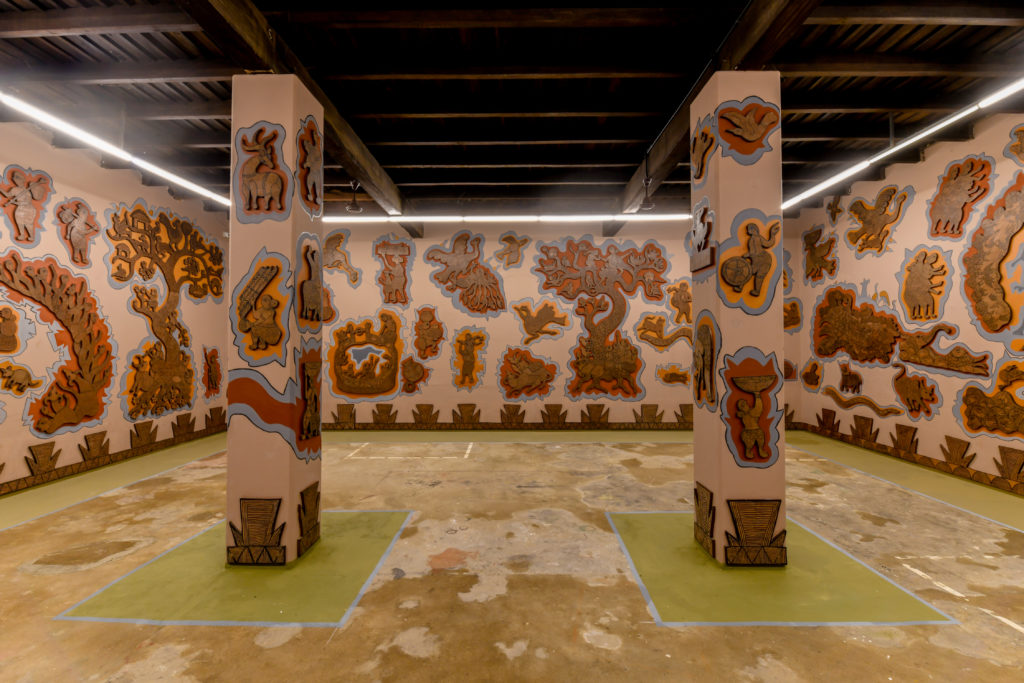
Durgabai and Subhash Vyam, Installation view at Kochi-Muziris Biennale 2018, Courtesy of Kochi
Biennale Foundation
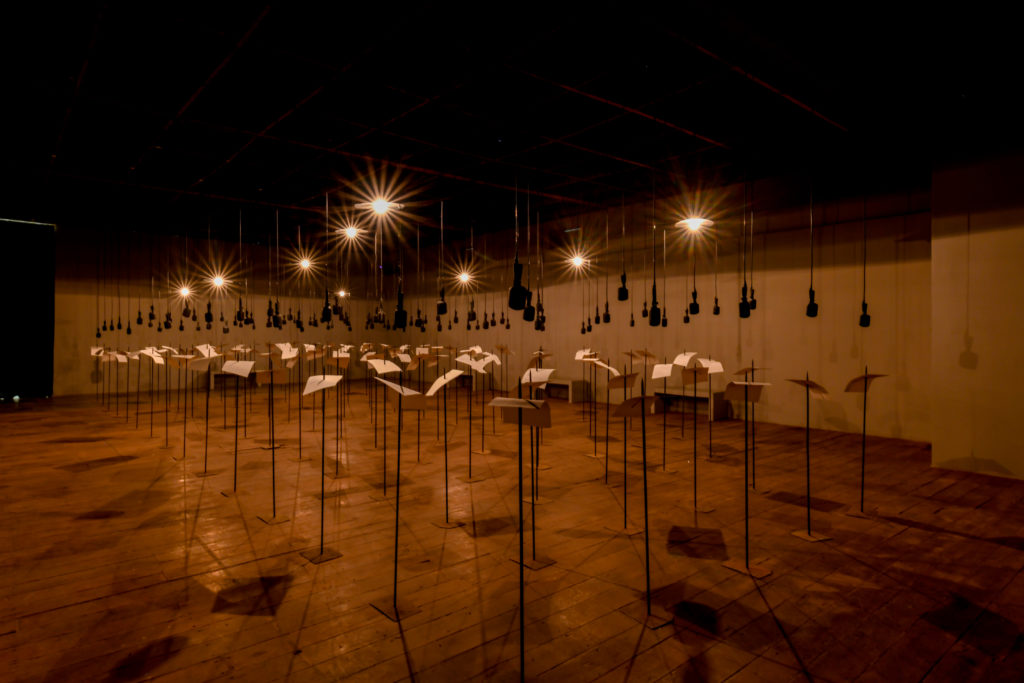
Shilpa Gupta, Installation view at Kochi-Muziris Biennale 2018, Courtesy of Kochi
Biennale Foundation.
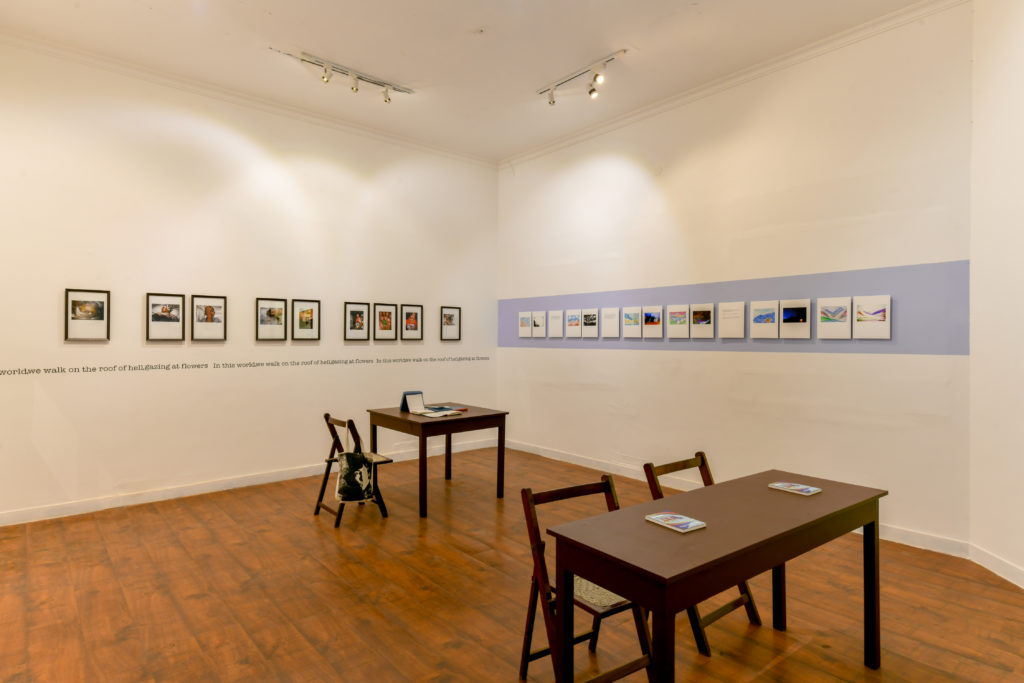
Chandan Gomes, Installation view at Kochi-Muziris Biennale 2018, Courtesy of Kochi
Biennale Foundation.
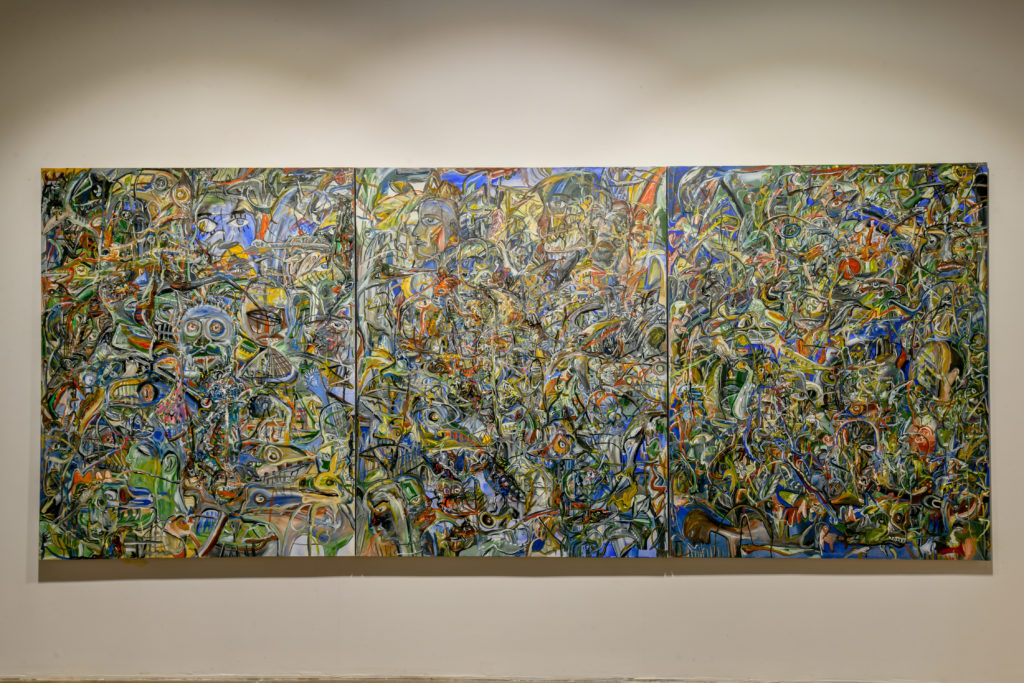
PR Satheesh, Installation view at Kochi-Muziris Biennale 2018, Courtesy of Kochi
Biennale Foundation.

Nilma Sheikh, Installation view at Kochi-Muziris Biennale 2018, Courtesy of Kochi
Biennale Foundation.
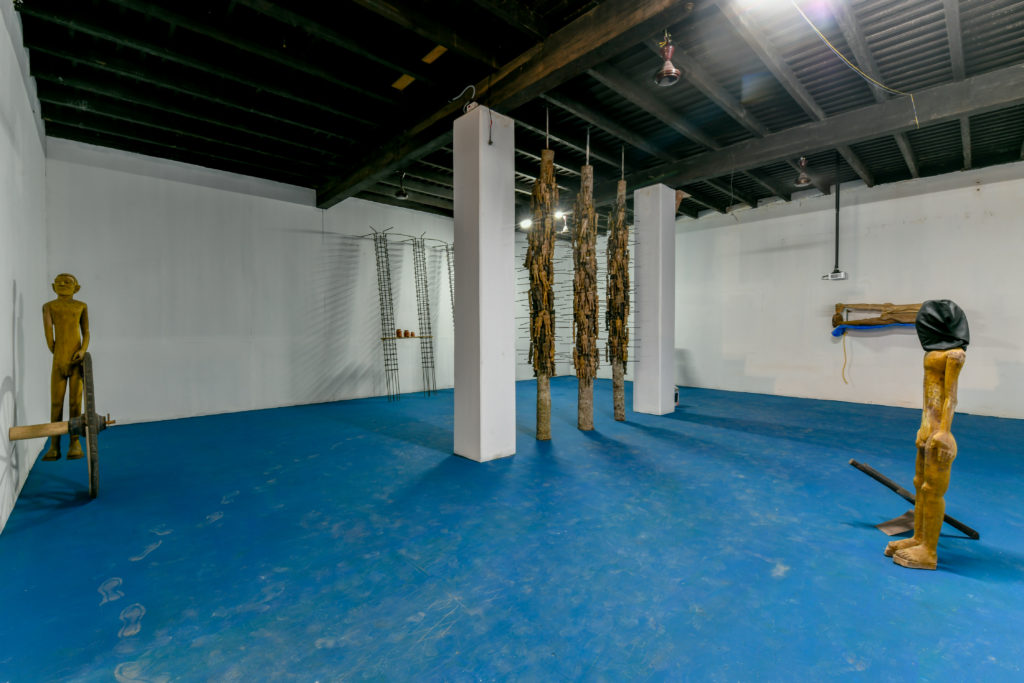
VV Vinu, Installation view at Kochi-Muziris Biennale 2018, Courtesy of Kochi
Biennale Foundation.
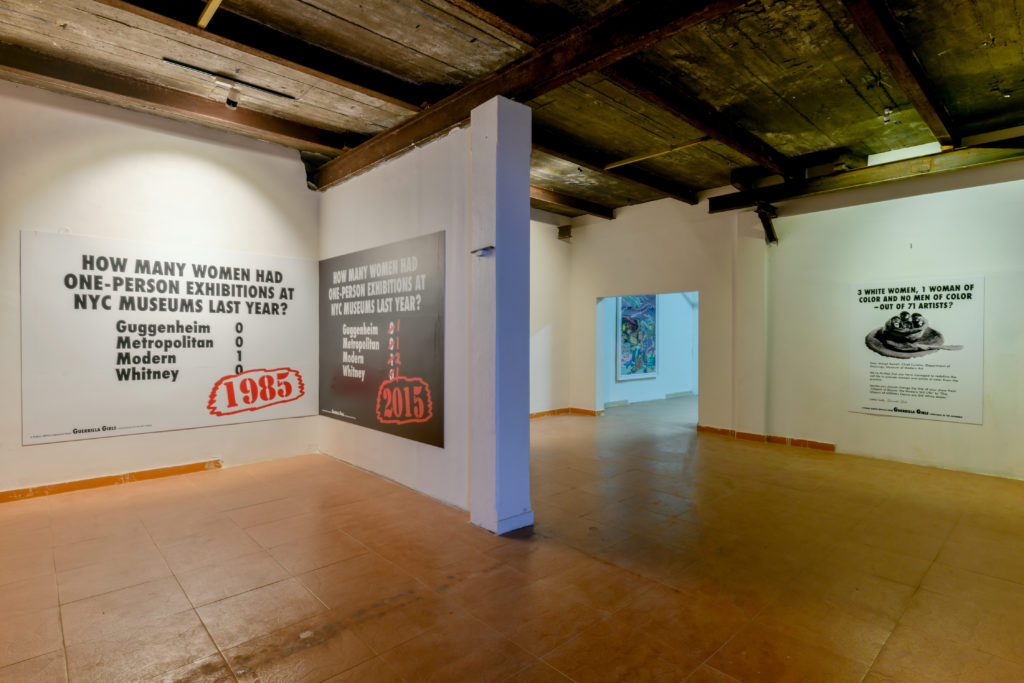
Guerilla Girls, Installation view at Kochi-Muziris Biennale 2018, Courtesy of Kochi
Biennale Foundation.
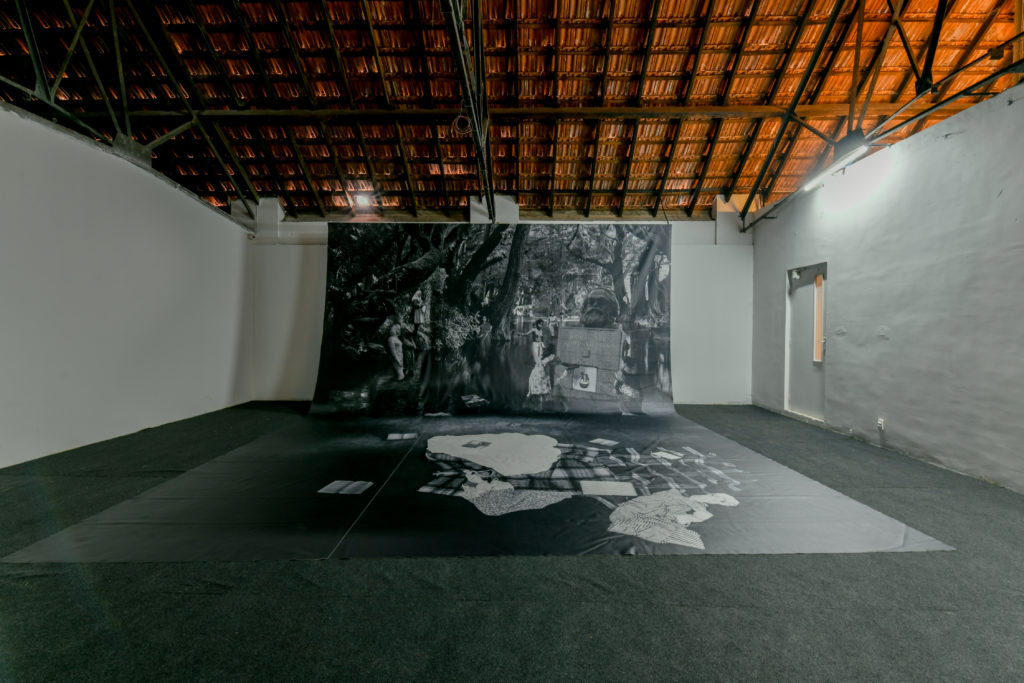
Goshka Macuga, Installation view at Kochi-Muziris Biennale 2018, Courtesy of Kochi
Biennale Foundation.
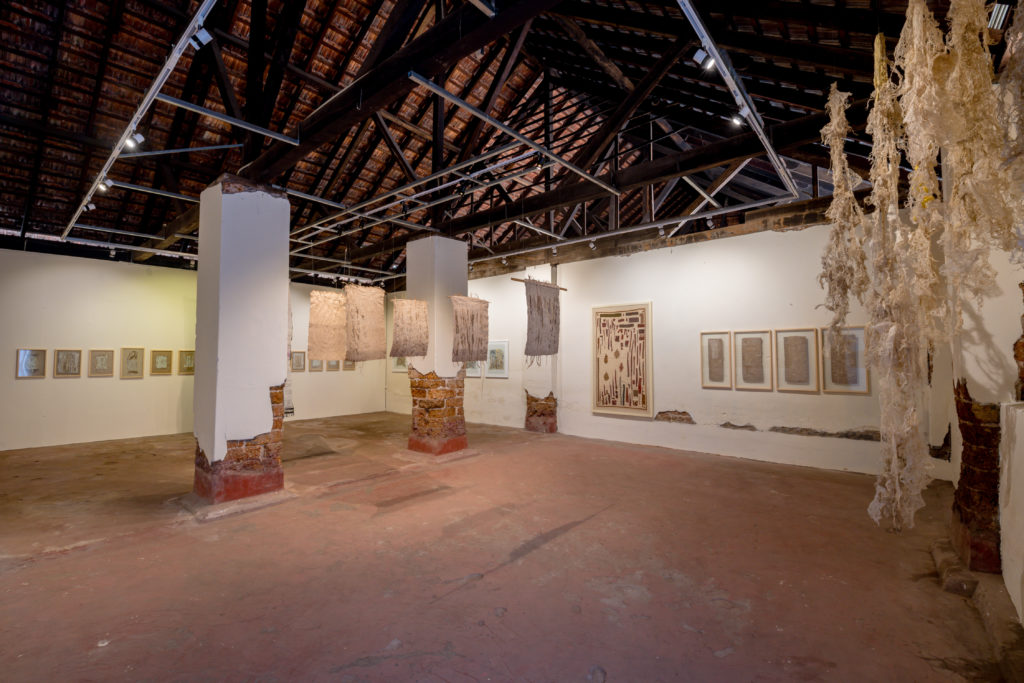
Priya Ravish Mehra, Installation view at Kochi-Muziris Biennale 2018, Courtesy of Kochi
Biennale Foundation
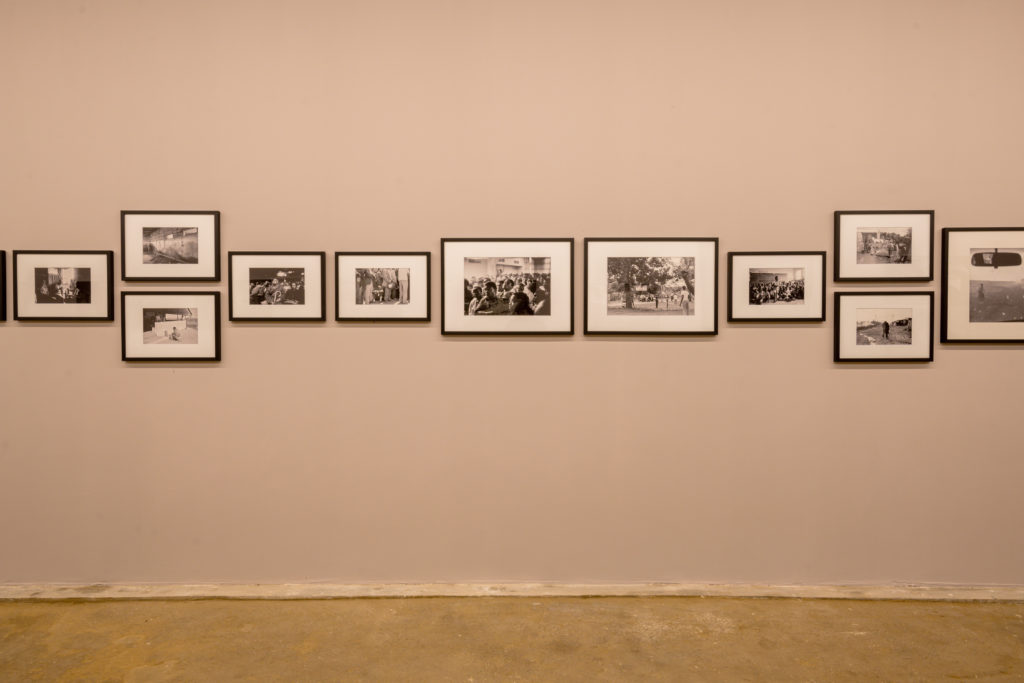
Santu Mofokeng, Installation view at Kochi-Muziris Biennale 2018, Courtesy of Kochi
Biennale Foundation.
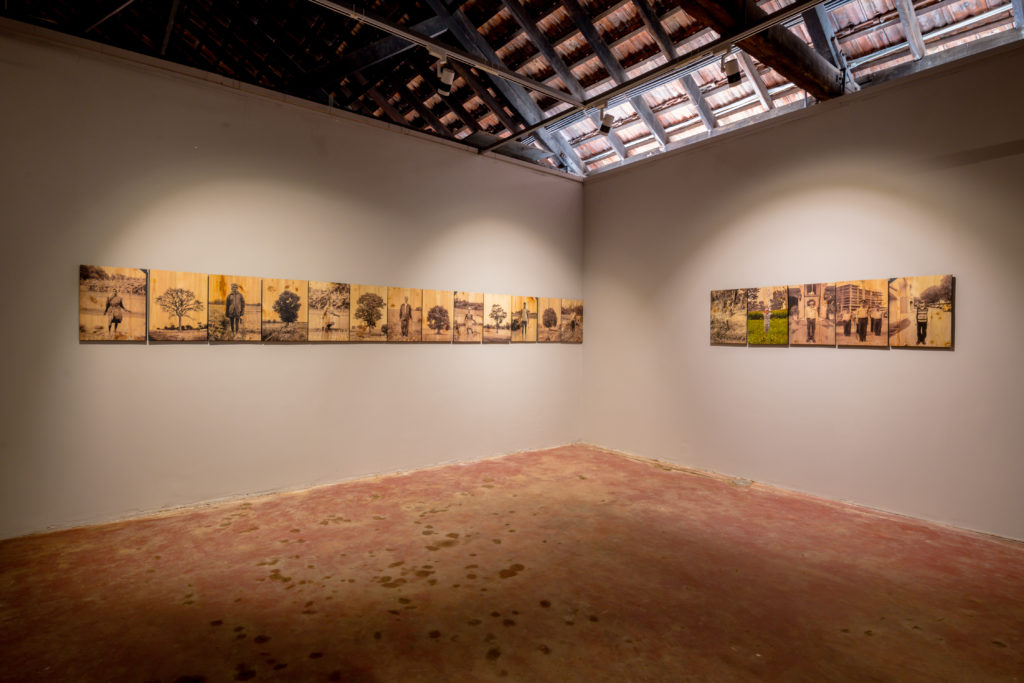
Arunkumar HG, Installation view at Kochi-Muziris Biennale 2018, Courtesy of Kochi Biennale Foundation.

Sunil Janah, Installation view at Kochi-Muziris Biennale 2018, Courtesy of Kochi
Biennale Foundation.
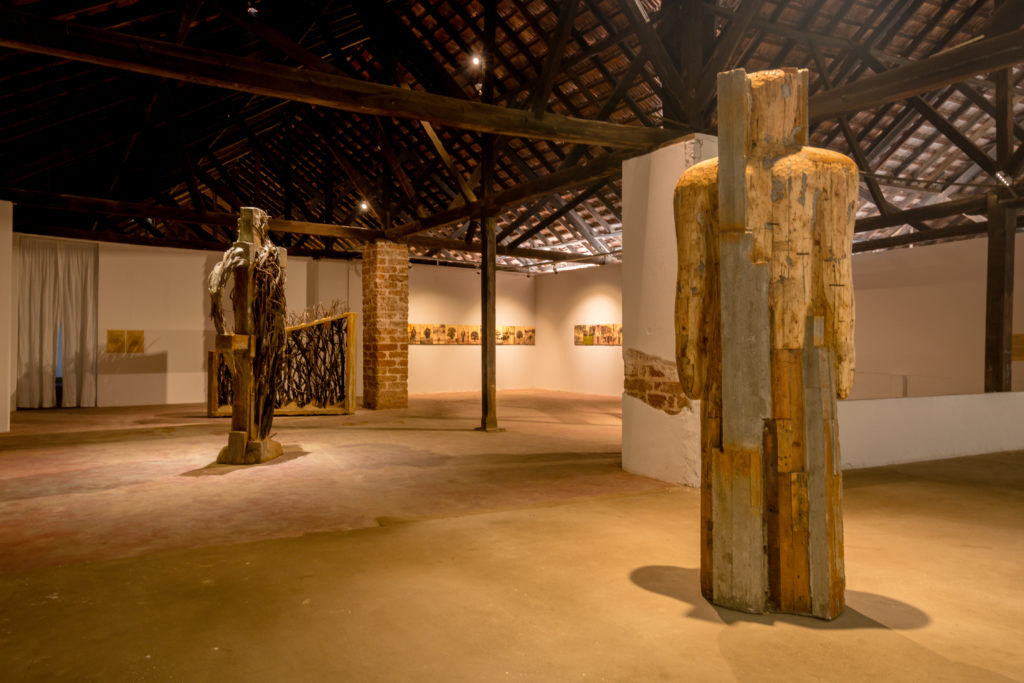
Arunkumar HG, Installation view at Kochi-Muziris Biennale 2018, Courtesy of Kochi
Biennale Foundation